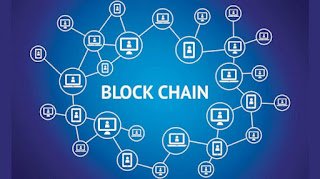The question “what is a blockchain?” has become One of the most popular search titles on the Google search engine in recent years. Many curious people search for titles like “Blockchain for Beginners” for “Blockchain Training Courses,” or “Introducing Blockchain” for someone else's explanation of Blockchain.
So, what is blockchain technology?
We may simply say that the blockchain, which is known in Arabic as “block chain” is the data that is stored and maintained through a decentralized network of computers.
This unreliable technology has the potential to fundamentally change the current world as we know it by redefining how we process information and convey values. For example, blockchain enables us to transfer digital money peer-to-peer without going through banks. This technology reduces the need for an intermediary in many traditional sectors, such as: banking, insurance, entertainment, government, and others. Although blockchain is in its early stages of development, this technology has already begun to be used in real life in cryptocurrencies, government data storage, and other areas. Possible possibilities for its use in the public and private sectors are also studied.
One of the most famous blockchains known to this day is the one used in the cryptocurrency "Bitcoin".
How it works?
The concept of blockchain technology has been discussed in many books, but let's take a look at the basic concepts of this technology, taking Bitcoin for example:
Blockchain technology records information related to Bitcoin transactions, such as the source of this money, the destination it was sent to, the timing of the transaction, its value, the fees paid in it, and all information related to this transaction. All this information is stored in a series of "blocks", which are somewhat similar to a bowl. In the case of Bitcoin, each block contains data stored for 2,000 transactions (at least until late 2017). Process blocks are connected with cipher auxiliary links.
Blockchain can store various types of data, such as: details of cryptocurrency operations, contents of land registry, insurance records, health history, car accident history, title changes, and more. It can also act as a platform for other applications.
Blockchains, which function as distributed ledgers with specific timestamps of transactions, are stored (in most cases) through decentralized networks of computers, also called “nodes,” with each computer storing an entire Blockchain.
Blockchain features:
The Blockchain is not modifiable, as any change to it requires enormous computing power, and the Blockchain becomes more secure the more ancient it is.
The Blockchain is somewhat transparent, as anyone can see the data stored in the Blockchain (Bitcoin for example) around which all transactions stored can be viewed using the Blockchain browser. However, some blockchain technologies offer more anonymity.
Blockchain tends to be decentralized, as there is no central authority to control it unlike traditional databases that can be blocked and monitored by their owner. The blockchain can maintain its functionality 24/7 in the event of any malfunction in the network. However, there are trends for more centralized blockchain projects.
All of these features give rise to the hope of transforming our daily routine procedures into more efficient, transparent, faster and less costly procedures.
Blockchain types:
There are two types of blockchain:
public, (such as Bitcoin), where anyone can join the network of nodes.
Private, (used mostly by companies), where only people with permission can add their own devices to the network.
It is used in the field of cryptocurrency
The block technology has been of high quality and within the spaces in this article. 0 seconds out of 15 seconds during trading in the digital foreign trade arena, tokens, non-fungible tokens.
[1] The basic working principle of Dance is storing data on a central server and distributing it to network members, creating blocks or copies of a dataset and instantaneous changes to it, such as transfers in the case of cryptocurrencies. What are the components of a blockchain? Back to the shape block of basic elements can be set as follows:
[2] Blocks (Blocks) Each contains information on changes in data, the state of cryptocurrencies - each block for example on the latest changes and instantaneous changes in re-balances, along with information Others confirm the validity of the block. Hashing is an incremental method (evidence of action) to two other factors. Proof of Stake: (Proof of Stake) This mechanism depends on interacting together, the issue of its marriage hypotheses shows the uses of the block in various fields that use several forms, as follows:
The need for an intermediary or a central body to manage ocean affairs and remittances, and the great security that you save again for its disk units, the collection of increase Contracts between two parties without a middle party, starting earlier The beginning of the emergence of many new applications of the Blockchain, such as: decentralized applications, and block-based games Chen. Commercial centers, which are suitable for preservation, assembly, future, commercial bank, central bank, and central bank receive and circulate without the need for a central authority that acknowledges its guards.
[6] What are the pros of blockchain? Blockchain technology has many brands that make it ready for use in traditional commerce, and its most important advantages are:
[7] Security in the absence of centralized services from the exposure of the Blockchain to a crippling attack, and the transfers of the amount of computing, computing, computing, computing power , Computational. Trade volume leads to minimal investment. Infrastructure Infrastructure Simple style in hierarchical email and optical. What are the downsides of blockchain?
Blockchain technology has run its course, making it a business that my production companies go back to creating projects to fix. References Have a question? Ask here Was the article helpful?
Yes No Subscription Law on the Number of Public Lines Definition and Elements
